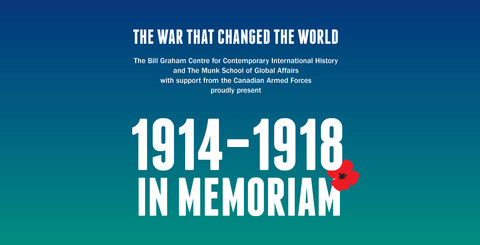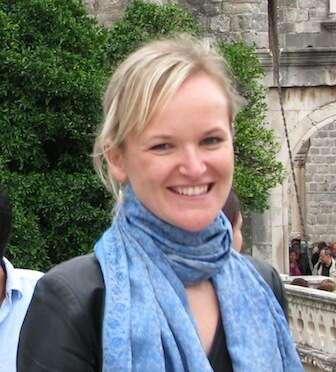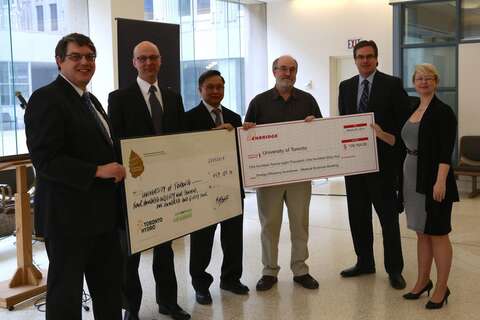Partnership with Industry Enables Open Discovery
A new collaboration aimed at developing therapies for mood disorders and Alzheimer’s disease — known as the Neuroscience Catalyst — launched on November 6. The new public-private partnership brings together the University of Toronto with Janssen Inc. and the Johnson & Johnson Innovation Center in California to support collaborative, open-source research.
“Mood disorders and Alzheimer’s disease are chronic illnesses that impact hundreds of millions of people worldwide. By 2040, these debilitating brain diseases could surpass cancer as the second-leading cause of death. Finding solutions that bring relief to those who face these aliments, and the family and friends who care for them, are what makes this partnership so important,” said Catharine Whiteside, U of T’s Dean of Medicine and Vice-Provost, Relations with Health Care Institutions.
Researchers at U of T and its affiliated hospitals through the Toronto Academic Health Science Network (TASHN) are welcome to submit collaborative proposals. Scientists from Janssen will work with U of T researchers to provide the drug-discovery expertise required to rapidly develop new medicines from basic science innovations. The open nature of the research means the findings can be published and researchers are free to commercialize their work with any company they wish.
The Neuroscience Catalyst is based at the Centre for Collaborative Drug Discovery (CCDR), which is a multidisciplinary initiative bringing together researchers from U of T’s Faculty of Medicine, the Leslie Dan Faculty of Pharmacy and the Centre for Addiction and Mental Health (CAMH).
“There is a tremendous amount of incredible blue sky, curiosity-driven research being conducted at U of T. When we launched the CCDR, we began by looking across the fields of research in Toronto and asked ‘Where is there an opportunity and a need for us to add real impact in drug discovery?’” said Ruth Ross, the Centre’s inaugural director. Ross is a Professor and Chair of Toxicology and Pharmacology in the Faculty of Medicine and Senior Scientist with the Campbell Family Mental Health Research Institute at the Centre for Addiction and Mental Health (CAMH).
Neuroscience is one area where Ross and partners saw CCDR could help to create a collaborative network to accelerate the translation of bench research into new treatments. In addition to the Neuroscience Catalyst, there will be other venues for researchers to share information and meet as a community. The first meeting will be held on November 27 when the Centre hosts Neuroscience Research Day on New Targets in Neurodegeneration and Neuropsychiatry.
Ross said the focus in neuropsychiatry and neurodegeneration highlights the “…urgent and compelling need for scientists, government and industry to work together in partnership, using their collective expertise to seek safe effective new interventions for debilitating conditions such as depression and Alzheimer’s disease.”
The Neuroscience Catalyst is overseen by a Joint Steering Committee with representatives from the University of Toronto, CAMH, St. Michaels Hospital, Sunnybrook Hospital, University Health Network, and Janssen Inc. Ross believes the partnership is an example for future open innovation consortia with additional industry partners.
“Working with Janssen and Johnson & Johnson Innovation gives us important insights that we don’t necessarily always have access to in the academic setting. Well-developed expertise in areas like screening, medicinal chemistry and working with large libraries of compounds often lies with our colleagues in industry,” said Ross. “As the Neuroscience Catalyst demonstrates, we can pursue open and collaborative research conducted in partnership with industry support that can deliver new therapies to improve human health,” said Ross.
In addition to its work on neuroscience, CCDR will also lead the development of other areas of research focus including: Natural Products in Health and Disease, in collaboration with the new Centre for Integrative Medicine; Pharmacogenomics and Drug Safety; and, New Approaches to Anti-Infective Therapies.

Optimize this page for search engines by customizing the Meta Title and Meta Description fields.
Use the Google Search Result Preview Tool to test different content ideas.
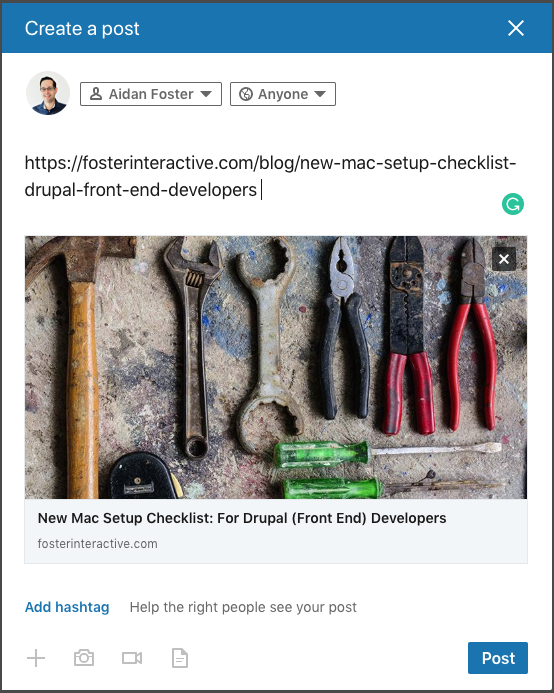
Select a Meta Image to tell a social media platform what image to use when sharing.
If blank, different social platforms like LinkedIn will randomly select an image on the page to appear on shared posts.
Posts with images generally perform better on social media so it is worth selecting an engaging image.
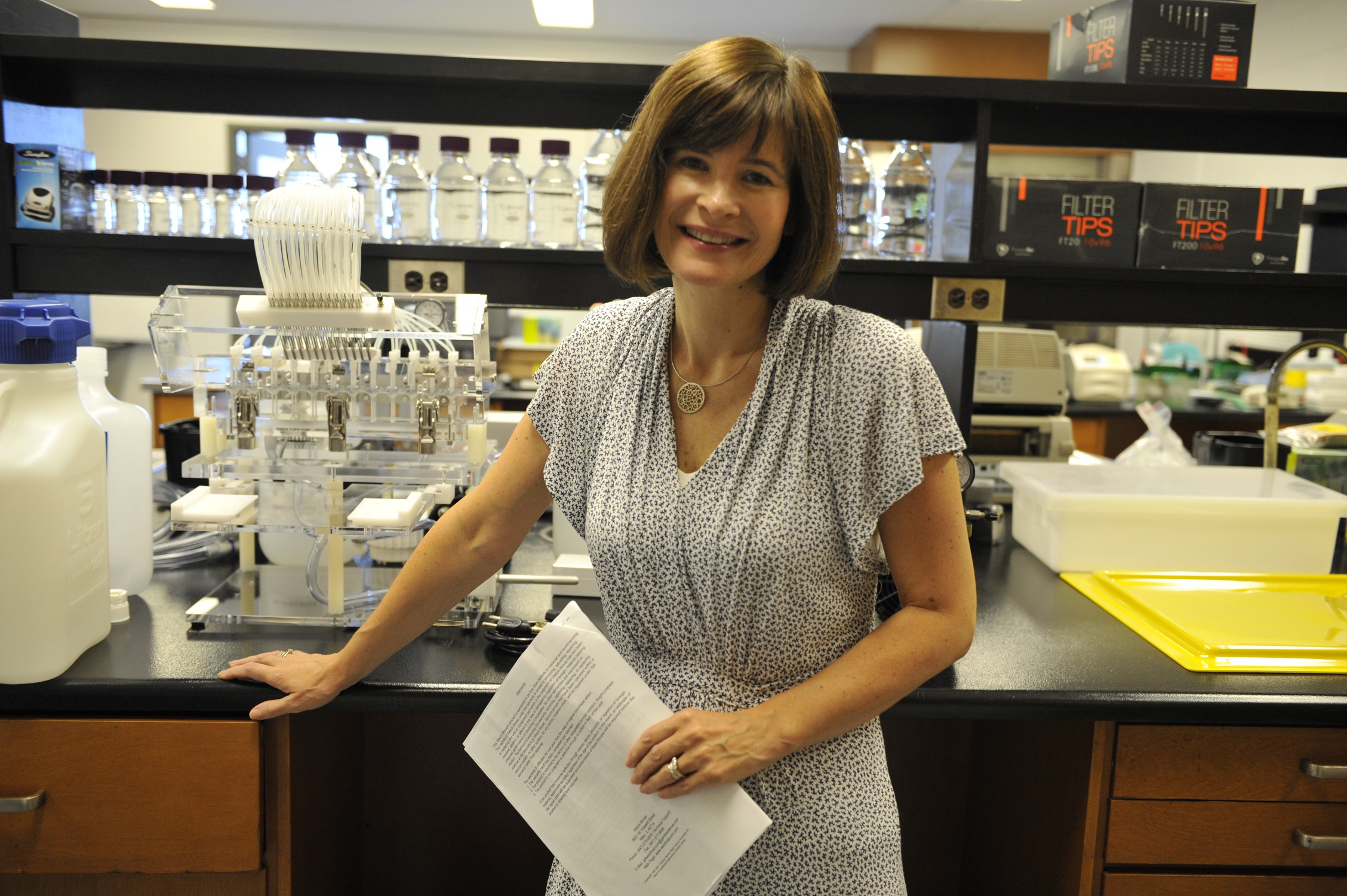
U of T Medicine Celebrates Orientation Week 2014!
In a week that included solemn oaths and goofy field races, U of T’s newest undergraduate medical class got to know the campus and each other. The Class of 1T8 Orientation Week was an opportunity to ease into life in U of T’s medical school. Here are some of the highlights from the week.

Optimize this page for search engines by customizing the Meta Title and Meta Description fields.
Use the Google Search Result Preview Tool to test different content ideas.

Select a Meta Image to tell a social media platform what image to use when sharing.
If blank, different social platforms like LinkedIn will randomly select an image on the page to appear on shared posts.
Posts with images generally perform better on social media so it is worth selecting an engaging image.
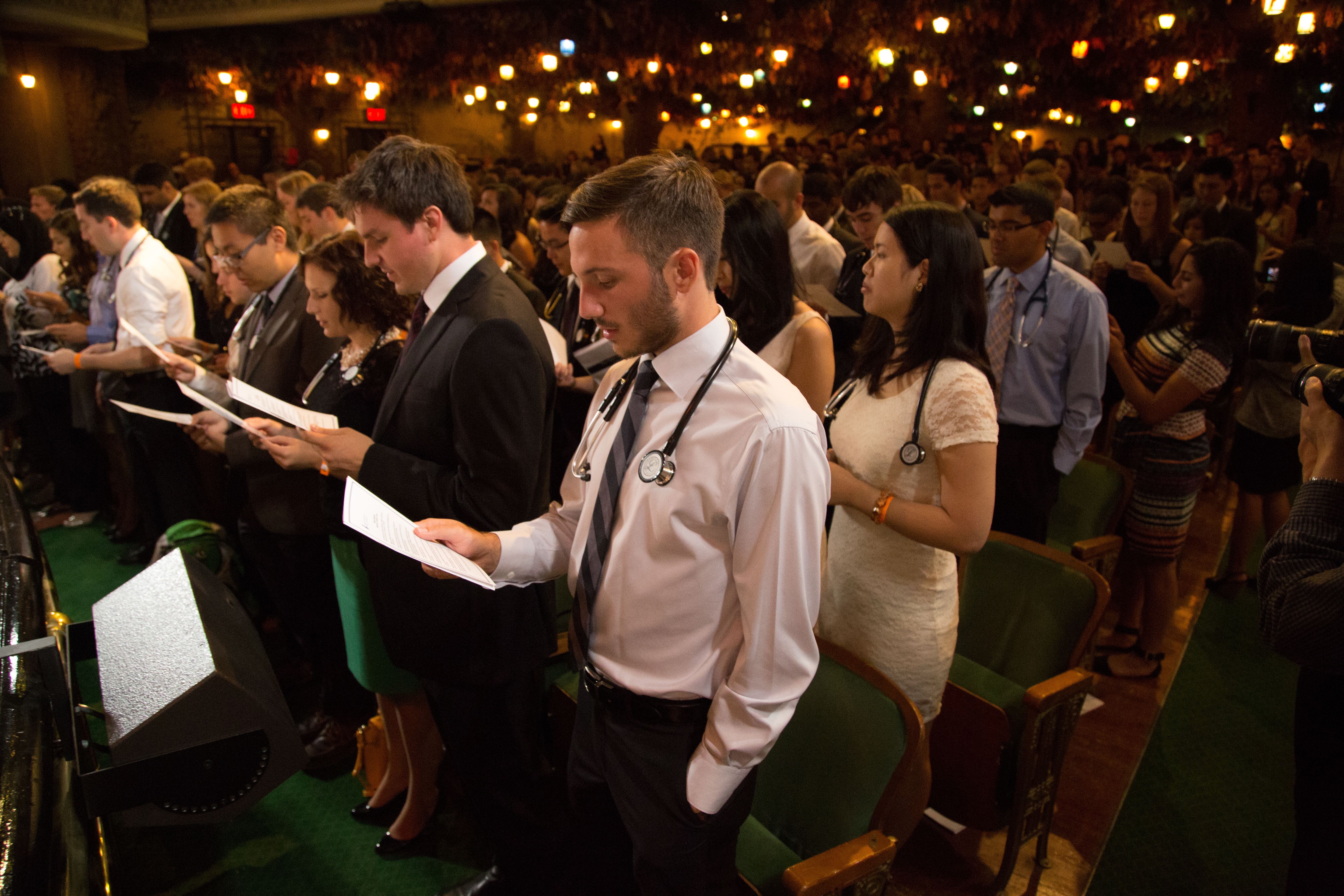
Sugar Wars
The media’s focus on fructose obscures the bigger picture – how to eat healthfully, argue U of T Faculty of Medicine researchers

Sugar has become the new fat — blamed as the source of childhood obesity, diabetes and worse. Prominent scientists, such as the University of California’s Robert Lustig, say it’s toxic and that fructose in particular — a fruit sugar that has been used to sweeten soft drinks since the 1980s — is fueling the rise of chronic disease.
But a pair of U of T researchers want to put the brakes on the anti-fructose movement, saying there’s simply no evidence this form of sugar is worse than any other — and that sugar in general is not the smoking gun of the obesity crisis.
Fructose is the new demon, but it's no worse than any other sugar or refined starches," said Cyril Kendall, a Senior Research Associate in the Faculty of Medicine's Department of Nutritional Sciences. "And there is a place for sugar in a healthy diet. Just be rational about how much you eat, and be aware of hidden sources in processed foods.
Critics claim fructose is processed differently than glucose, which is absorbed by our body’s cells and converted to energy. Fructose, on the other hand, goes straight to the liver — often in overwhelmingly large doses due to our modern processed diet. The liver then turns a big chunk of it directly into fat.
But that research is based on animal models, note Kendall and his colleague, John Sievenpiper, a professor in the Department of Nutritional Sciences. In meta-analyses of human studies, they found that fructose had the same impact as other sugars on weight gain, cholesterol, fatty liver and other health problems.
“My concern with the sugar story is this: if we say we’ve got our bad guy now and it’s sugar, the food industry can load up the product with starch or unhealthy animal fats,” said Sievenpiper, who is also a scientist with the Li Ka Shing Knowledge Institute at St. Michael’s Hospital. “The calories will stay the same and we’re going to keep getting overweight and having the same issues with obesity, diabetes, cancer and so on.”
As for the sugar in fruit, whole fruit is always a healthy choice because it contains fiber to slow the absorption of sugar, he said. And a small glass or two a day of fruit juice is a reasonable amount, he added.
Sievenpiper believes food packaging should be more informative, and include information about the glycemic index, pioneered by David Jenkins, a University Professor in the Faculty of Medicine’s Department of Nutritional Sciences. The health benefits of eating lower-glycemic foods are standing the test of time, he said. And that’s another reason to stop demonizing sugar. White bread, he said, has a higher glycemic index than table sugar.
“It comes down to moderation,” said Sievenpiper, who believes that home economics courses should be taught in school again, to help people understand how to prepare healthful meals from scratch and avoid processed foods that are loaded with sugar, salt and fat.
But moderation could be tough for people who may not realize just how much sugar is packed into everyday foods, said Steve Hirsch, a lecturer in the Faculty of Medicine’s Department of Family and Community Medicine.
“It’s all about the super-size phenomenon — to me that’s the real culprit,” said Hirsch, author of the book Health First: Winning at Weight Loss and Wellness. “The food industry puts so much sugar in things, that we have no idea how many teaspoons of sugar we are consuming, and most would be shocked by the amount.”
When McDonald’s first opened in the U.S., soft drinks only came in seven-ounce cups, and cola was a treat for Saturday night, he said. Today, the standard size is 20 ounces at fast-food outlets, and up to 64 ounces at cinemas, which contains at least 48 teaspoons of sugar. The World Health Organization recently proposed guidelines limiting sugar to six teaspoons a day.
“I don’t believe sugar is the only Holy Grail for obesity,” said Hirsch. “But it’s a big one.”

Optimize this page for search engines by customizing the Meta Title and Meta Description fields.
Use the Google Search Result Preview Tool to test different content ideas.

Select a Meta Image to tell a social media platform what image to use when sharing.
If blank, different social platforms like LinkedIn will randomly select an image on the page to appear on shared posts.
Posts with images generally perform better on social media so it is worth selecting an engaging image.
By Heidi Singer

1914-1918 In Memoriam
Google map
WITNESS THE PAGEANTRY . . . REMEMBER THE SACRIFICES
DOWNLOAD THE PROGRAM
Presentations by:
Professor Margaret MacMillan
Warden, St. Anthony’s College, University of Oxford
General Thomas J. Lawson, CMM, CD
Chief of the Defence Staff, Canadian Armed Forces
Musical performances
by the Massed Band of the Canadian Armed Forces
Free admission. Due to limited seating, registration is required.

Optimize this page for search engines by customizing the Meta Title and Meta Description fields.
Use the Google Search Result Preview Tool to test different content ideas.

Select a Meta Image to tell a social media platform what image to use when sharing.
If blank, different social platforms like LinkedIn will randomly select an image on the page to appear on shared posts.
Posts with images generally perform better on social media so it is worth selecting an engaging image.
New Research Shows Link Unlikely Between Insomnia Symptoms and High Blood Pressure
New research from the University of Toronto and St. Michael’s Hospital has found that insomnia does not put them at increased risk of developing high blood pressure, which is also known as hypertension.
Nicholas Vozoris, an Assistant Professor in the Division of Respirology and respirologist at St. Michael’s, said there is growing concern among patients and health care providers about the potential medical consequences of insomnia, especially on the cardiovascular system.
If there were a link, this would have at least two major implications for the health care system. First, because insomnia is common and often chronic in duration, a large portion of the population would need long-term screening for the possible development of high blood pressure.
Second, doctors might prescribe sleeping pills more often in an effort to treat a person’s insomnia and lower their blood-pressure. Vozoris said sleeping pills are already used too often and associated with a number of serious side effects, including addiction, overdose, car accidents and falls.
Vozoris said previous studies that suggested a link between insomnia and high blood pressure were often based on small numbers of people. He examined data from nearly 13,000 Americans who participated in the National Health and Nutrition Examination Survey, a series of studies designed to assess the health and nutritional status of adults and children in the United States. The survey is unique because it combines interviews and physical examinations.
Participants were asked about their insomnia symptoms, and their responses were correlated with whether they had doctor-diagnosed hypertension, were taking anti-hypertension drugs, or had measured high blood pressure.
“After adjusting for many factors, including whether or not participants were receiving blood pressure pills or sleeping pills, there were generally no associations between insomnia and high blood pressure, even among people who were suffering from insomnia the most often,” said Dr. Vozoris. “These results should reassure patients and their doctors that insomnia and high blood pressure are unlikely to be linked.”
His findings were published today in the Journal of Clinical Psychiatry.
The study is believed to be the first to examine for hypertension among people who self-reported various frequencies of insomnia symptoms.
“Patients who are suffering from insomnia and physicians who are trying to take care of them shouldn’t worry so much about insomnia affecting their heart in an adverse way,” he said.
“By showing there is no link between this very common sleep disorder and high blood pressure, physicians can be more selective when prescribing sleeping pills and refrain from prescribing these medications from a cardio-protective perspective.”
—
(Photo: Angel Sleeps by planetchopstick via flickr)

Optimize this page for search engines by customizing the Meta Title and Meta Description fields.
Use the Google Search Result Preview Tool to test different content ideas.

Select a Meta Image to tell a social media platform what image to use when sharing.
If blank, different social platforms like LinkedIn will randomly select an image on the page to appear on shared posts.
Posts with images generally perform better on social media so it is worth selecting an engaging image.
Leslie Shepherd

A student on the road less travelled
Ten years ago, Paul McKeever was a stone mason with no high school diploma. Today, he is conducting cutting-edge research on the causes of Alzheimer’s disease, which blighted the final years of his grandmother’s life.
“My career path has been a bit unusual,” said McKeever earlier this summer, as he recovered from a mysterious insect bite he got cycling up Gates Gully, an asphalt-strewn hill in Scarborough known by mountain bikers as one of Toronto’s toughest climbs.
That’s a bit of an understatement. McKeever left high school with middling marks, nine credits shy of his diploma. He spent the next four years laying stones around Toronto before deciding to take his life in a different direction.
He enrolled in the City Adult Learning Centre and finished all nine credits in less than a year. He was accepted at U of T Scarborough as a mature undergraduate, and studied human biology and neuroscience before homing in on Alzheimer's.
A graduate student in U of T’s Department of Laboratory Medicine and Pathobiology, McKeever is chasing the molecular roots of Alzheimer’s in the lab of Janice Robertson, a Professor in the Tanz Centre for Research in Neurodegenerative Diseases.
He will soon finish his master's and has an eye on doctoral study.
McKeever's interest in this enigma of aging arose from seeing his grandmother die with the disease. "She was one of the most amazing people in my life. When someone so lovely forgets your name, it really affects you," he says.
In Robertson's lab, McKeever works with a mouse model of Alzheimer's, developed by scientists at the Tanz Centre, to explore the inner workings of brain cells called cholinergic neurons. His goal is to figure out what makes these neurons susceptible to dysfunction early in the disease, with the hope of one day intervening before the cells start to die.
McKeever uses a new technique called TRAP (for Translating Ribosomal Affinity Purification) on cholinergic neurons. This process allows him to isolate the neurons’ messenger RNA — key molecules that control the movement of genetic information from genes to proteins. He then runs the resulting data through a Next Generation Sequencing technology called RNA Seq, housed in the Donnelly Centre for Cellular and Molecular Biology.
The combination of the two technologies allows McKeever to pick up minute changes in gene expression that were undetectable just a decade ago. He’s waiting on results from a recent experiment that could reveal new genes active in Alzheimer’s.
“Paul has been a great addition to the lab, coming with a maturity only gained through life experience,” says Robertson, who holds the Canada Research Chair in Molecular Mechanisms of Amyotrophic Lateral Sclerosis. “He has a rampant enthusiasm for research, he’s full of ideas and he’s an important part of our group, which is critical as teamwork is essential for making the big discoveries. I can fully relate to Paul as my grandmother also had Alzheimer’s — it was really tragic.”
McKeever is also passionate about teaching. Since 2009, he has done 15 teaching assistant appointments in several neuroscience courses, including neuroanatomy, learning and motivation, and synaptic organization of the brain.
Outside the lab, he helps maintain cyclist etiquette and safety as a ride leader for the Beaches Cycling Club, and this spring he entered and won his first Ontario Cycling Association Elite 4 road race — a 95-kilometre loop around the Lake of Bays through hail and snow.
In stationary moments, McKeever plays classical piano, a pursuit he has taught off and on since his time as a mason. His early struggles, it seems, have paved the way for a lasting drive and ability to focus.
“Look at our population curve,” says McKeever. “Neurodegenerative disease is the field to be in, if you want to make a difference. Alzheimer’s is about to become our worst-kept burden, which is why we need answers now.”


Optimize this page for search engines by customizing the Meta Title and Meta Description fields.
Use the Google Search Result Preview Tool to test different content ideas.

Select a Meta Image to tell a social media platform what image to use when sharing.
If blank, different social platforms like LinkedIn will randomly select an image on the page to appear on shared posts.
Posts with images generally perform better on social media so it is worth selecting an engaging image.

Dean's Message: Fulfilling Our Potential
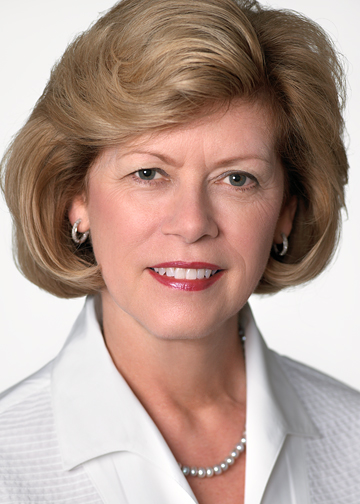 In the next two weeks, a number of important projects within the Faculty will simultaneously come to fruition after months of preparation and planning led by the Office of Strategy, Communications and External Relations (OSCER). These projects include the publishing of Fulfilling Our Potential, the Faculty of Medicine’s 2013–2014 Dean’s Report this week, and a Faculty-wide midpoint strategic retreat on April 2, which will coincide with the launch of a new promotional video and Faculty website. The unifying theme across all these endeavours is our Strategic Plan, which sets out both the means by which the Faculty pursues its mission and vision, and the framework by which we measure our results.
In the next two weeks, a number of important projects within the Faculty will simultaneously come to fruition after months of preparation and planning led by the Office of Strategy, Communications and External Relations (OSCER). These projects include the publishing of Fulfilling Our Potential, the Faculty of Medicine’s 2013–2014 Dean’s Report this week, and a Faculty-wide midpoint strategic retreat on April 2, which will coincide with the launch of a new promotional video and Faculty website. The unifying theme across all these endeavours is our Strategic Plan, which sets out both the means by which the Faculty pursues its mission and vision, and the framework by which we measure our results.
Optimize this page for search engines by customizing the Meta Title and Meta Description fields.
Use the Google Search Result Preview Tool to test different content ideas.

Select a Meta Image to tell a social media platform what image to use when sharing.
If blank, different social platforms like LinkedIn will randomly select an image on the page to appear on shared posts.
Posts with images generally perform better on social media so it is worth selecting an engaging image.
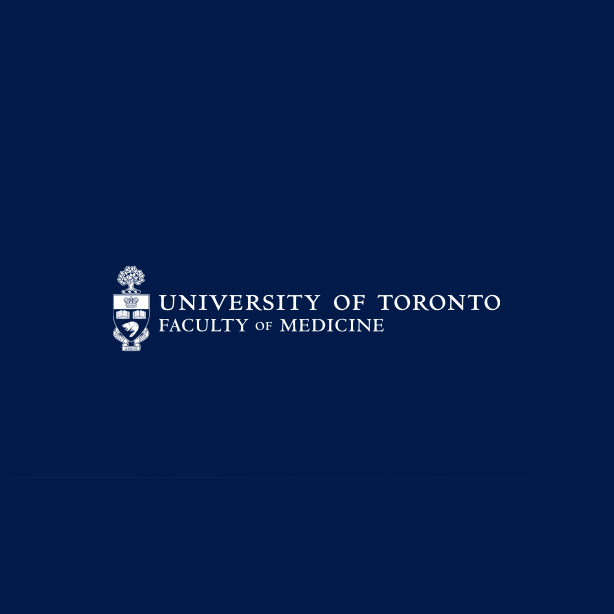
MaMTH Advance: New Technology Sheds Light on Protein Intercations
Scientists have a better way to study human proteins — large molecules that are part of every cell in the body — thanks to a new technology developed by University of Toronto researchers. The technology tracks a class of proteins called membrane proteins as they interact with other proteins to either maintain health or contribute to disease.
Membrane proteins make up about one third of all proteins in the human body, and their malfunction is associated with more than 500 diseases. But they’ve been hard to study because understanding their role depends on observing their interactions with other proteins.
“This technology gives us a new tool to examine membrane proteins in their natural environment of the human cell,” said Igor Stagljar, a Professor in the Donnelly Centre for Cellular and Biomolecular Research. “As well, it’s sensitive enough to detect minor changes upon introduction of drugs, so it should prove useful in the development of therapeutics, particularly for cancer and neurological diseases.”
The journal Nature Methods published the research online today.
Stagljar and his colleagues also applied the new technology, which they dubbed MaMTH (for Mammalian-Membrane Two-Hybrid assay), to identify a protein that plays a role in the most common form of lung cancer called non-small cell lung cancer.
That protein, CRKII, interacts with another protein called an epidermal growth factor receptor. Mutation of this receptor — which is already the target of several cancer drugs either approved or in development — causes a proliferation of cancer cells.
“CRKII most likely regulates the stability of mutated epidermal growth factor receptors and drives cancer growth by promoting signaling, or communication, within cancer cells,” said Julia Petschnigg, lead author on the paper and a postdoctoral fellow at U of T. “We found that a combinatorial chemotherapy that inhibits those mutated receptors and CRKII could be beneficial in treating lung cancer.”
The research was highly collaborative, involving cancer clinicians, bioinformaticians and researchers in five labs around Toronto and Boston. Stagljar and his lab spent four years developing the MaMTH technology, which they adapted from a similar technology that captures protein-protein interactions in yeast.
Next, the group will apply their technology to study some of the 500 proteins that are mutated in other human diseases.
“You simply cannot publish meaningful research in proteomics without collaborating,” said Stagljar, who is also a Professor in the Departments of Biochemistry and Molecular Genetics. “Fortunately, we have access to great cross-disciplinary expertise and infrastructure in the Donnelly Centre. Science is alive and well in Toronto.”
This project was funded by the Ontario Genomics Institute, Canadian Institutes of Health Research and Canadian Cancer Society.

Optimize this page for search engines by customizing the Meta Title and Meta Description fields.
Use the Google Search Result Preview Tool to test different content ideas.

Select a Meta Image to tell a social media platform what image to use when sharing.
If blank, different social platforms like LinkedIn will randomly select an image on the page to appear on shared posts.
Posts with images generally perform better on social media so it is worth selecting an engaging image.
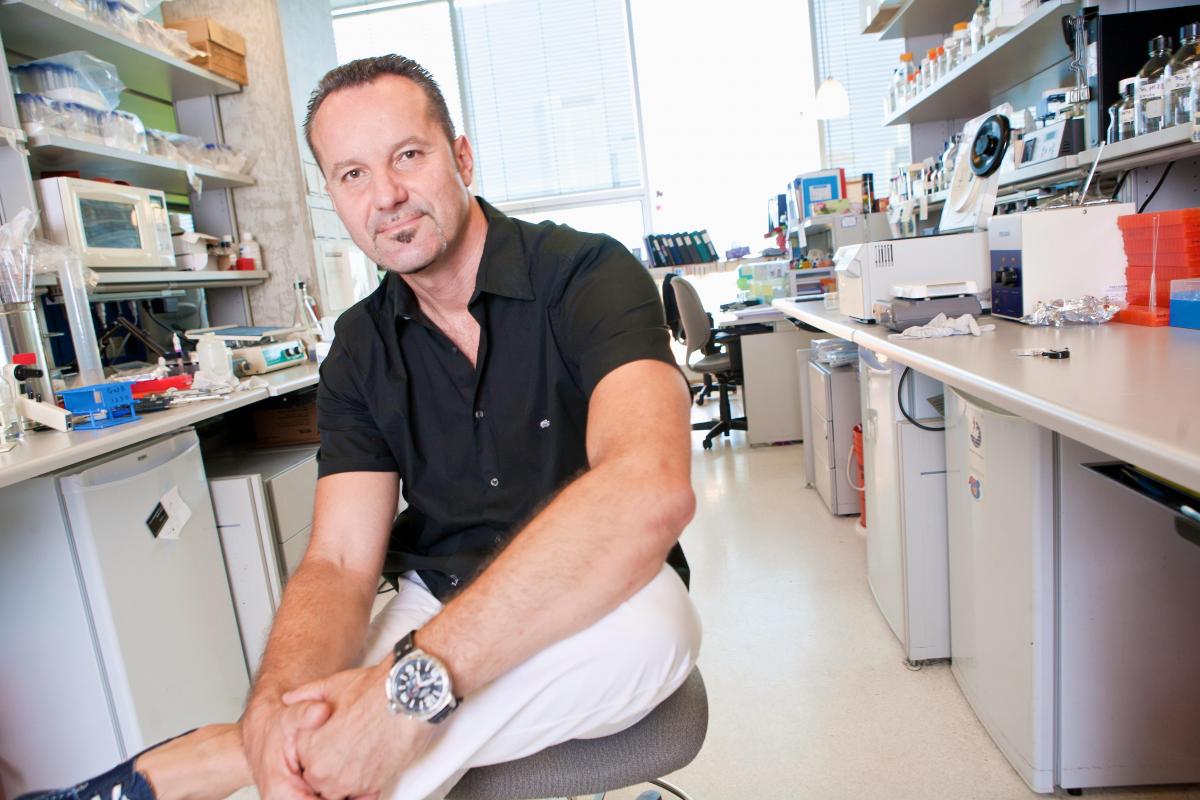
Fuelling Research While Saving Energy
From early-morning classes to late-night lab work, the University of Toronto’s Medical Sciences Building (MSB) is a bustling hub for thousands of students, scientists and academic leaders. Its extensive, 24-hour wet labs — where researchers handle chemicals, drugs and biological matter — and plethora of offices and classrooms mean it requires more energy than any other campus building to run efficiently and safely.
But thanks to an innovative energy reduction initiative, supported by both U of T’s Facilities and Services Department and the Faculty of Medicine, the MSB is drastically reducing its annual energy consumption and saving more than $600,000 each year.
“With a campus this size, controlling energy spending is challenging, so finding savings within the organization is crucial,” says Ron Swail, U of T’s Assistant Vice-President of Facilities and Services, who likens the operation of the St. George Campus to a city of 70,000 people with massive buildings and distinct energy demands. “U of T’s investment in reducing energy consumption in the MSB will be realized within only 18 months — one of the best returns on investment I’ve ever seen on a project of this magnitude and complexity.”
Conceived and spearheaded by Chun Lee, U of T’s Manager of Mechanical Operations and Maintenance, the University installed cutting-edge technology to dramatically improve the buildings mechanical systems. This included installation of variable speed drive fan technology, enhanced building automation, and wireless room level thermostatic controls, so air flow and temperature can now be automatically adjusted based on the building’s occupancy needs.
“Before, fresh cooled or heated air was supplied to empty rooms overnight. The new system delivers air based on time of day and the type of work performed,” says Heather Taylor, Director of Facilities Management and Space Planning in the Faculty of Medicine.
The $1.4 million initiative included $588,000 in incentives from Toronto Hydro and Enbridge Gas, including one of the largest single cheques ever awarded by Enbridge. These cheques were presented to the University today in a brief ceremony.
The primary project team consisted of: Ron Swail, Chun Lee, Attila Keszei, Heather Taylor, Tim Neff, Tony Kern, Bruce Dodds, Dieter Pfeiffer, Paul Leitch, Samiddha Aryasinghe and Clinton Watkis.
U of T students, faculty and staff who are interested in reducing the university’s environmental footprint can visit the Facilities and Services Sustainability Office’s website and submit ideas to the Energy & Resource Management Fund.
By the Numbers
Sustainability is a core value of U of T Facilities and Services. Through creative energy-saving solutions, here’s what U of T has achieved over the past 40 years:
- More than 60 billion litres of water saved
- More than 1 million tonnes of greenhouse gas avoided
- More than $200 million in utilities cost savings
- 71.4 per cent of St. George campus’ total waste is recycled — one of the highest diversion rates of any North American university - More than 250,000 trees saved through paper product recycling alone

Optimize this page for search engines by customizing the Meta Title and Meta Description fields.
Use the Google Search Result Preview Tool to test different content ideas.

Select a Meta Image to tell a social media platform what image to use when sharing.
If blank, different social platforms like LinkedIn will randomly select an image on the page to appear on shared posts.
Posts with images generally perform better on social media so it is worth selecting an engaging image.
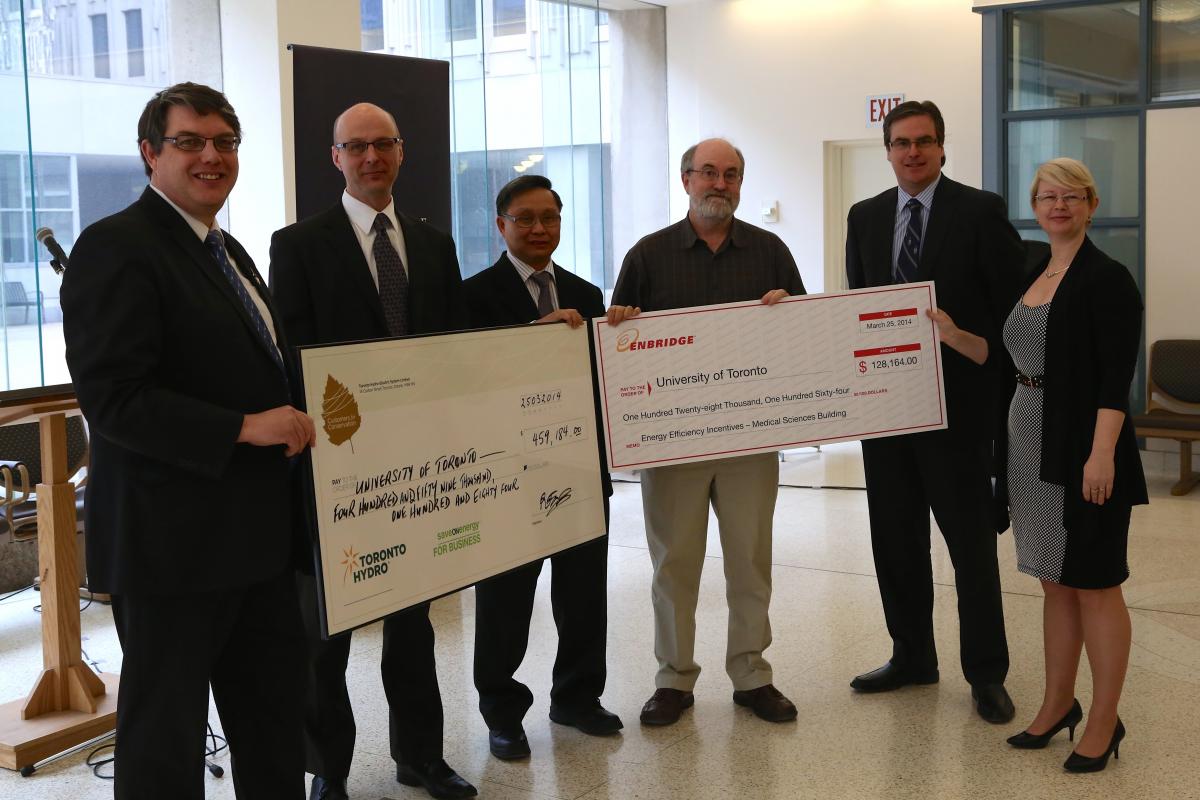
Research for the Radiation Therapist - A Canadian First
Four University of Toronto professors have led development of a textbook for radiation therapists who want to do research.
The book, Research for the Radiation Therapist: From Question to Culture, fills a major void in instructional literature for the 1,800 radiation therapists across Canada.
Professors Caitlin Gillan, Lisa Di Prospero, Nicole Harnett and Lori Holden — all radiation therapists and members of the Department of Radiation Oncology — created the textbook together with 60 radiation therapy experts and students from across the country.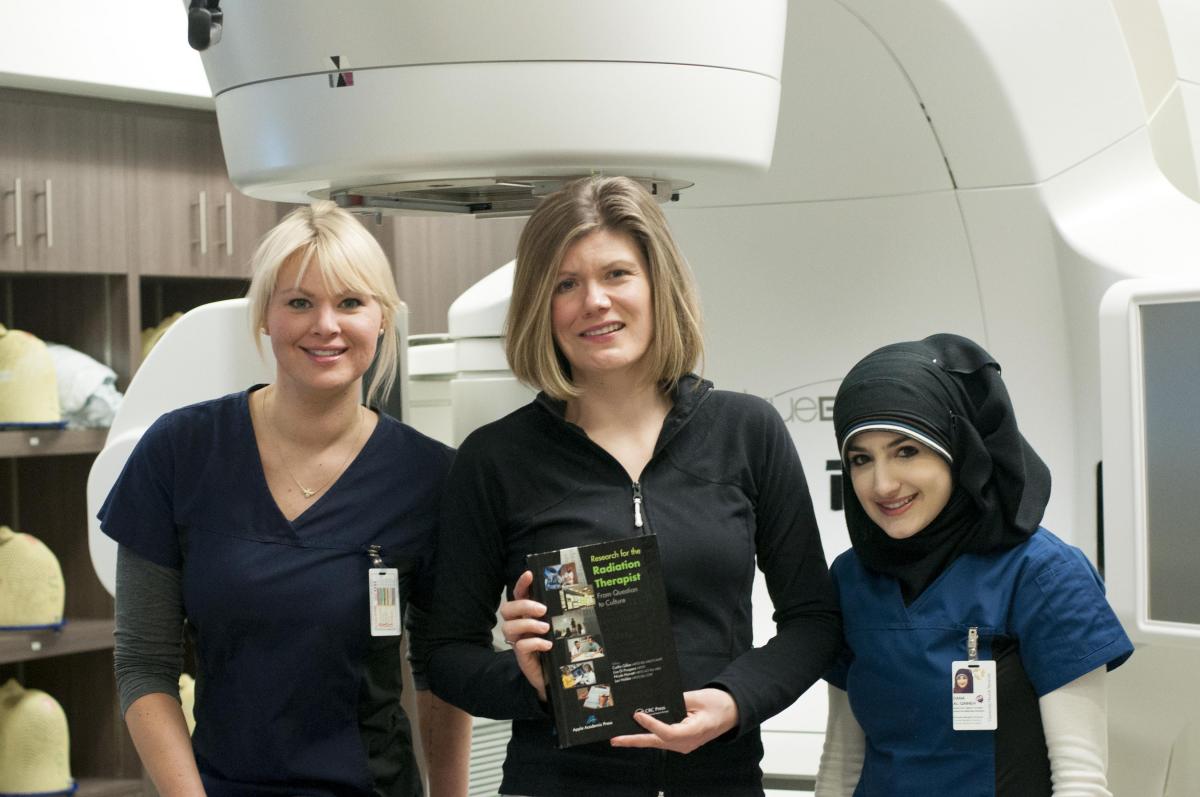
The book is the first of its kind in Canada.
“Students in radiation therapy programs currently don’t have a textbook from their discipline to guide them on how to approach research,” said Gillan. “They are using textbooks from nursing and general allied health to learn about research. Although the scientific principles in these books are universal, the students have had to adapt them to radiation therapy.”
The new book provides a context for radiation therapy research, and offers practical examples from the clinical and academic experiences of its contributors. The editors invited research and health professionals to write chapters on ethics, survey methodologies and other topics.
Students and radiation therapists also contributed case studies and peer reviews. The result is a 387-page textbook with content on every phase of research, colourful case examples and insight from many perspectives, including those of a librarian and a bio-statistician.
The editors felt it was critical to include students in the creation of the book. Floortje Brus, a third-year undergraduate student in the U of T and Michener Institute joint Medical Radiation Sciences program, read the book cover-to-cover to identify content gaps before publication.
“As a student, and being new to research, reading this book made research appear less intimidating and more feasible to undertake,” said Brus. “When I reviewed the book, I had just started my clinical research project, so reading these chapters was very useful.”
But the book is not only for students and novice researchers. “In addition to informing students and radiation therapists about capital "R" research, we want to help foster a familiarity with the research world among therapists. None of us will ever work in an environment where we are not striving for evidence-based practice or engaging with patients who might require us to understand the trials and protocols that define their treatment.”
The book’s publication is a milestone for those who led and contributed to it, but Gillan and the other editors hope it will serve as inspiration and guidance for many within their field for years to come, and help build an inquiry-based culture in radiation therapy.
Research for the Radiation Therapist: From Question to Culture, is published by Apple Academic Press. It is now available from Amazon as a book and e-book, and will soon be available at the University of Toronto Bookstore.

Optimize this page for search engines by customizing the Meta Title and Meta Description fields.
Use the Google Search Result Preview Tool to test different content ideas.

Select a Meta Image to tell a social media platform what image to use when sharing.
If blank, different social platforms like LinkedIn will randomly select an image on the page to appear on shared posts.
Posts with images generally perform better on social media so it is worth selecting an engaging image.
Sarah Khan

